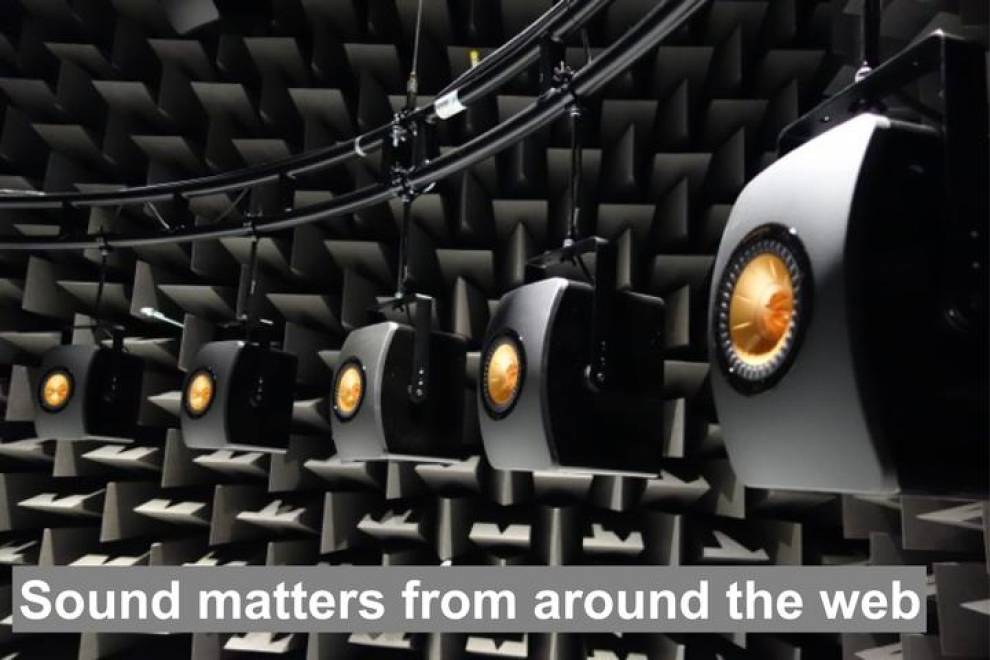
A (continually updated) collection of informative/interesting/weird/curious sound-related links.
In the news
- London's Big Ben about to go silent for 4 years
- Hearing Loss is a major risk factor for Dementia
- NYC subway exposes commuters to noise as loud as a jet engine
- The Science Behind Hating Hillary's Voice
- "In Pursuit of Silence" - a new documentary film
- A plan to quiet the oceans
- Musician sues Royal Opera House over ruined hearing
Physics of sound
- WaveNet: A Generative Model for Raw Audio
Google deepmind link
- 7 ways the future will be quieter
resonics link
- Making sound waves
Scientific American link
- The coolest things sound waves do
- Visualizing sound with a 2-D Ruben's Tube.
- How Sound Reveals The Invisible Within Us
- Volcano sounds used to predict erruptions
- The Differences Between Soundproofing and Sound Absorption
UK Acoustic Systems link
Hearing
- Hidden Hearing Loss
- How Ancient Whales Turned Sound Into a Killing Tactic
- Vestigial Ear-Wiggling Reflex
- The auditory system may hold the evolutionary key to T-Rex's dominance
- How earbuds wreck your hearing
- Can having children wreck your hearing? Measuring real people's daily noise dose
- How cells in the developing ear 'practice' hearing
- Can a loud enough sound kill you?
- Alarms against under 25s?
- 8 Month old deaf baby hears for the first time
- Dancing hair cell.
Auditory Perception
- Why Do I Hate the Sound of My Own Voice?
- Is preference for consonance over dissonance innate or cultural?
- Understanding the chills and thrills of musical rapture
- A musician afraid of sound
- The science behind 'beatboxing'
- The incredible things we do during a conversation
- How penguins use sound to find their chicks
- The Neuroscience Of Musical Perception, Bass Guitars And Drake
- How a trippy version of a Mariah Carey Christmas hit fools the brain
- Why screams are special
- The strangest sounds in the world
- Prof. Sophie Scott on why we laugh
- Smart glasses translate video into sound to help the blind 'see'
- Sound Illusions inspired pre-historic cave art?
- You are what you speak
- Auditory Neuroscience demos
Music
- The sound illusion that makes Dunkirk so intense
- Elephant Seals Can Recognize Rhythm And Pitch
- Making music from brainwaves
- Researcher scans Sting's musical brain
- The musical harmonies you like depend on where you're from.
- 'Sea Organ' uses ocean waves to make music
- Translation of sound - RCA project with SONOS
- Vanishing Languages, reincarnated as music
- Body of songs - Music inspired by the organs of the body
- Steve Reich's clapping music
- Dial-tone drone - a project by the artist Aura Satz
- polyphonic overtone singing explained
- mongolian throat singing
- Haydn's 'farewell' symphony (No. 45)
When the symphony was written, Haydn's patron Prince Nikolaus Esterházy was resident, together with all his musicians and retinue, at his favorite summer palace at Eszterháza in rural Hungary. The stay there had been longer than expected, and most of the musicians had been forced to leave their wives back at home in Eisenstadt, about a day's journey away. Longing to return, the musicians appealed to their Kapellmeister for help. The diplomatic Haydn, instead of making a direct appeal, put his request into the music of the symphony: during the final adagio each musician stops playing, snuffs out the candle on his music stand, and leaves in turn, so that at the end, there are just two muted violins left (played by Haydn himself and his concertmaster, Luigi Tomasini ). Esterházy seems to have understood the message: the court returned to Eisenstadt the day following the performance
- Cat pianos, sound houses and other imaginary musical instruments
- Touch pianist
Sound-scapes
- 10 hours of ambient noise from an icebreaker in the frozen arctic
- The Urban Auditory Experience: Sound Awareness and Understanding our World of Sound
blog entry here
- NASA’s 2020 Rover Will Carry Microphones to Mars
Scientific American link
- Bat-sound library tracks biodiversity
- Why sound-scapes are critical to Architecture
- How Sound Reveals The Invisible Within Us
- The unexpected beauty of everyday sounds
- BBC Radio4 "The sound of Life"
- Everbody should be quiet near a little stream
- The soundscape of Tasmania's ancient rainforest
- A history of the universe in sound
- What does UCL sound like?
- What is the noisiest city in the UK?
BBC link
- Why it's so difficult to turn down the volume at popular restaurants
Bloomberg link
Misc
- Listening at double speed
- A sound that is impossible to ignore?
- The music that will make babies happy
- Inbred Songbirds Cannot Carry A Tune
- The secret world of Foley (Sound Effect) artists
- Hearing aids and the future of wearables
- X-Ray video of a cochlear implant surgery
- Can 5,300-year-old mummy finally get its voice?
- The hardest language to whisper in
- Mysterious New Humpback Whale "Song" Detected?
- 2016 'Flame Challenge': What is sound?
- The guy who hacked his hearing aid to let him listen to wifi networks
- The truth behind kissing sounds in movies
 Close
Close

